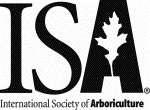
| Current Articles |
| Browse Archives |
| Search |
| Contact Us |
| AUF Home |
 |
Arboriculture & Urban Forestry Online
| Volume 34, Issue 5 —
September 2008
https://www.isa-arbor.com/Publications/Arboriculture-Urban-Forestry |
|
Efficacy of Foliar Applications, Trunk Injections, and Soil Drenches in Reducing Populations of Elongate Hemlock Scale on Eastern Hemlock (View PDF) Michael Raupp, Robert Ahern, Brad Onken, Richard Reardon, Stacey Bealmear, Joseph Doccola, Paul Wolfe II, and Peter Becker Abstract: We examined the efficacy of two approaches for controlling elongate hemlock scale on eastern hemlocks in an arboretum. One approach relied on foliar applications of an insect growth regulator, pyriproxyfen, and horticultural spray oil when crawlers were abundant. The second approach evaluated soil drenches and trunk injections of the systemic insecticides imidacloprid, dinotefuron, and acephate. Foliar applications of pyriproxyfen and horticultural oil provided superior levels of control of elongate hemlock scale compared with soil drenches, trunk injections, or implants of insecticides in the year that applications were made. After foliar sprays, population reductions were rapid and, in the case of pyriproxyfen, lasted into the second growing season. By the third year, significant differences in elongate hemlock scale populations were no longer found among trees treated with insecticides and those that were not. Imidacloprid applied as a soil drench had limited efficacy in reducing populations of elongate hemlock scale on one date in the first season. Acephate implants and trunk injections of dinotefuron did not reduce the abundance of elongate hemlock scale relative to untreated trees. Arborists can achieve high levels of control of elongate hemlock scale with foliar sprays of pyriproxyfen or horticultural oil applied when crawlers are abundant in spring. Keywords: Acephate; dinotefuran; Fiorinia externa; horticultural oil; imidacloprid; plant health care; pyriproxyfen; systemic insecticides |
Current Articles
| Browse Archives | Search | AUF Home | ISA Home
| Get Acrobat